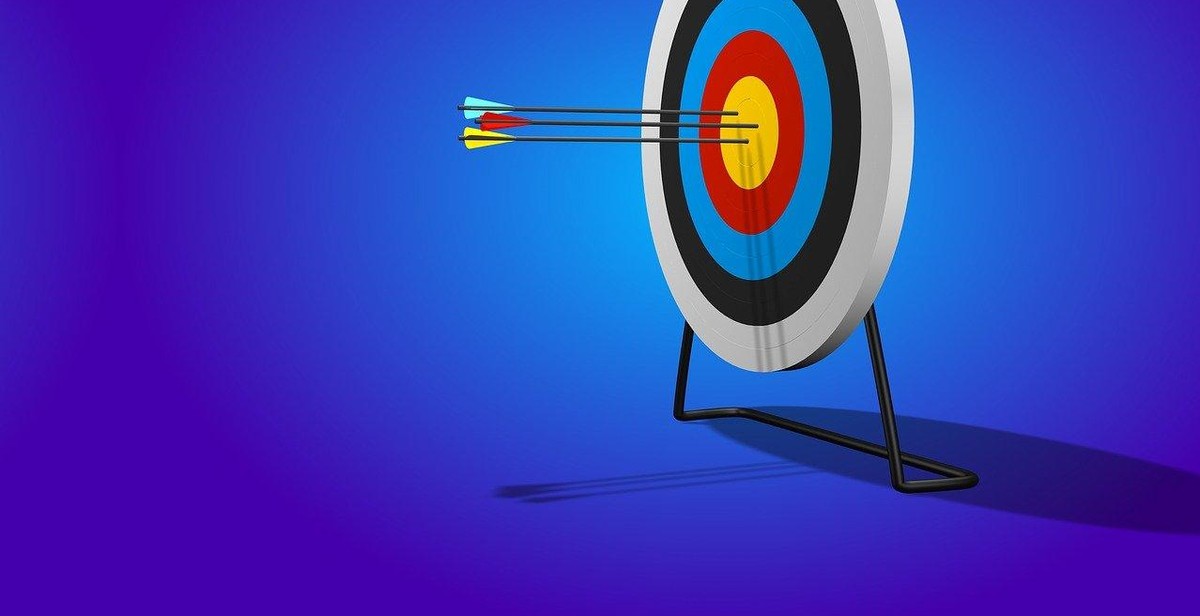How to Improve Archery Accuracy: Techniques for Aiming and Release
Archery is a timeless sport that requires a lot of focus, patience, and dedication. Whether you are a beginner or an experienced archer, improving your accuracy is always a challenge. However, with the right techniques and practice, you can improve your aim and release, and hit your target with precision.
Why is accuracy important in archery?
Accuracy is the key to success in archery. It is the difference between hitting the bullseye and missing the target completely. Without accuracy, you cannot consistently hit your target, and your performance will suffer. That’s why it’s essential to focus on improving your accuracy if you want to become a successful archer.
Techniques for improving your aiming and release
- Proper stance and posture: Your stance and posture play a critical role in your accuracy. Make sure you stand straight, with your feet shoulder-width apart, and your body facing your target.
- Focus on your breathing: Breathing is essential in archery. Take a deep breath, hold it for a few seconds, and release it slowly before taking your shot.
- Use the right equipment: The right equipment, including a bow and arrow that fit your body, can make a big difference in your accuracy.
- Practice regularly: Practice is the key to improving your accuracy. Set aside some time each day to practice your aiming and release technique.
By implementing these techniques and practicing regularly, you can improve your archery accuracy and take your skills to the next level.
Understanding the Basics of Archery Accuracy
Archery accuracy is essential for any archer, whether you are a beginner or an experienced one. Achieving consistent accuracy requires a combination of proper form, anchor point, and understanding your equipment. In this section, we will discuss each of these factors in detail.
The Importance of Proper Form
Proper form is the foundation of archery accuracy. Without it, an archer will struggle to hit their targets consistently. When it comes to proper form, there are several key elements to keep in mind:
- Stance: Your feet should be shoulder-width apart and perpendicular to the target.
- Grip: Your bow hand should have a relaxed grip, and your fingers should be wrapped around the bow handle.
- Posture: Your back should be straight, and your shoulders should be relaxed.
- Alignment: Your bow arm, string hand, and arrow should all be in a straight line.
Consistency in Anchor Point
Anchor point refers to the point at which an archer draws the bowstring back to their face. Consistency in anchor point is crucial for consistent accuracy. To achieve this consistency, you should aim to:
- Draw the bowstring back to the same spot on your face every time.
- Use a reference point, such as the corner of your mouth or the tip of your nose, to ensure consistent alignment.
- Practice regularly to build muscle memory and develop a consistent anchor point.
Understanding Your Equipment
Understanding your equipment is essential for achieving archery accuracy. This includes knowing your bow’s draw weight, arrow length, and other specifications. Additionally, you should:
- Choose arrows that are appropriate for your bow and shooting style.
- Ensure your bow is properly tuned and adjusted.
- Regularly inspect your equipment for any signs of wear or damage.
| Proper Form | Consistent Anchor Point | Understanding Your Equipment |
|---|---|---|
| Stance | Draw the bowstring back to the same spot on your face every time | Know your bow’s draw weight, arrow length, and other specifications |
| Grip | Use a reference point for consistent alignment | Choose arrows that are appropriate for your bow and shooting style |
| Posture | Practice regularly to develop muscle memory | Ensure your bow is properly tuned and adjusted |
| Alignment | Regularly inspect your equipment for any signs of wear or damage |

Techniques for Aiming
Archery accuracy depends on how well you aim and release the arrow. Here are some techniques for improving your aim:
Choosing the Right Sight
The sight is the device that helps you aim at the target. There are different types of sights, such as pin sights, dot sights, and scope sights. Choose the one that works best for you based on your shooting style, the type of archery you do, and your budget.
Pin sights are the most common and affordable type of sight. They consist of several pins that you can adjust to different distances. Dot sights are similar to pin sights but use a single dot instead of pins. Scope sights are more advanced and provide magnification for better accuracy. They are popular among professional archers.
The Importance of Focus
One of the most important techniques for aiming is to stay focused on the target. Keep your eyes fixed on the center of the target and avoid distractions. Try to visualize the arrow hitting the target before you release it.
Another way to improve your focus is to practice mindfulness. Mindfulness is a technique that helps you stay present and aware of your surroundings. It can help you reduce stress and anxiety, which can affect your aim.
Finding Your Dominant Eye
Your dominant eye is the one that your brain uses to process visual information. It is important to know which eye is dominant for archery because it affects your aim. To find your dominant eye, extend your arm and make a triangle with your fingers. Look through the triangle at a distant object and close one eye at a time. The eye that keeps the object in the center of the triangle is your dominant eye.
Once you know your dominant eye, position your sight accordingly. If you are right-eye dominant, position the sight on the right side of the bow. If you are left-eye dominant, position the sight on the left side of the bow.
By choosing the right sight, staying focused, and finding your dominant eye, you can improve your archery accuracy and hit the bullseye more often.
Release Techniques for Improved Archery Accuracy
Releasing the arrow is one of the most critical aspects of archery. A proper release technique can make all the difference in hitting your target accurately. Here are some release techniques that can improve your archery accuracy:
Proper Grip and Finger Placement
The way you grip your bow and place your fingers on the string can significantly impact your release. Ensure that you have a relaxed and consistent grip on your bow, and your fingers are placed correctly on the string. Your index finger should be above the nocking point, and your middle and ring fingers should be below it.
Back Tension and Follow Through
Back tension is crucial for a smooth and consistent release. Pull your shoulder blades together to engage your back muscles, and hold the bowstring with your back muscles, not your fingers. Follow through with your shot by keeping your bow arm extended and your focus on the target even after the arrow has been released.
Using a Release Aid
A release aid can help you achieve a more consistent and precise release. There are different types of release aids available, such as wrist strap, thumb trigger, and hinge release. Experiment with different types to find the one that works best for you.
- Wrist strap – This type of release aid wraps around your wrist and has a trigger that you pull with your index finger.
- Thumb trigger – This release aid has a trigger that you activate with your thumb.
- Hinge release – This type of release aid doesn’t have a trigger. Instead, it releases the bowstring when you rotate the release aid.
Using a release aid can also help reduce target panic, which is a common problem among archers. Target panic is when you become anxious or nervous when aiming at the target, which can cause you to release the arrow prematurely. A release aid can help you overcome this problem by providing a more controlled release.
Conclusion
By practicing these release techniques, you can improve your archery accuracy and consistency. Remember to maintain a relaxed grip, engage your back muscles, and consider using a release aid to achieve a more precise release. With time and practice, you’ll be hitting your targets with ease!

Practice Drills for Improved Accuracy
Improving accuracy in archery requires consistent practice and commitment. Here are some practice drills that can help you improve your accuracy:
Blank Bale Shooting
Blank bale shooting involves shooting at a blank target from a close range of about 3-5 yards. This drill helps improve your form and technique and helps you focus on your shot execution without worrying about hitting a specific target. It is an excellent drill for beginners and experienced archers alike.
Distance Shooting
Distance shooting involves shooting at targets from varying distances. This drill helps improve your accuracy and focus, as you have to adjust your aim and technique for each distance. Start with shorter distances and gradually increase the distance as you become more comfortable. This drill is essential for preparing for competitions and hunting.
Shooting with Obstacles
Shooting with obstacles involves setting up obstacles such as trees or bushes between you and the target. This drill helps you improve your accuracy and focus, as you have to adjust your aim and technique to shoot through or around the obstacles. It is an excellent drill for hunters and archers who shoot in wooded areas.
Target Shooting
Target shooting involves shooting at a specific target from a fixed distance. This drill helps improve your accuracy and consistency, as you have to hit the same spot repeatedly. You can use different types of targets, such as bullseye targets, 3D targets, or animal targets. This drill is essential for preparing for competitions and hunting.
| Practice Drill | Benefits |
|---|---|
| Blank Bale Shooting | Improves form and technique, helps focus on shot execution |
| Distance Shooting | Improves accuracy and focus, prepares for competitions and hunting |
| Shooting with Obstacles | Improves accuracy and focus, prepares for hunting in wooded areas |
| Target Shooting | Improves accuracy and consistency, prepares for competitions and hunting |

Conclusion
Improving your archery accuracy requires a combination of proper technique, consistent practice, and patience. Remember to always prioritize safety and seek guidance from a professional coach if you’re a beginner.
Techniques for Aiming and Release
- Use a consistent anchor point and grip
- Focus on the target with your dominant eye
- Use a sight or peep sight to aid in aiming
- Practice proper breathing techniques to maintain focus
- Use a smooth release to avoid torque or jerking the bowstring
Other Tips for Improving Accuracy
- Invest in quality equipment that fits your body and skill level
- Warm up and stretch before shooting to avoid injury and improve flexibility
- Practice shooting from different distances and angles to simulate real-life scenarios
- Record and analyze your shots to identify areas for improvement
Final Thoughts
Improving your archery accuracy is a journey, not a destination. With consistent practice and dedication, you can develop the skills and confidence to hit your target with precision and accuracy. Remember to enjoy the process and celebrate your progress along the way.
